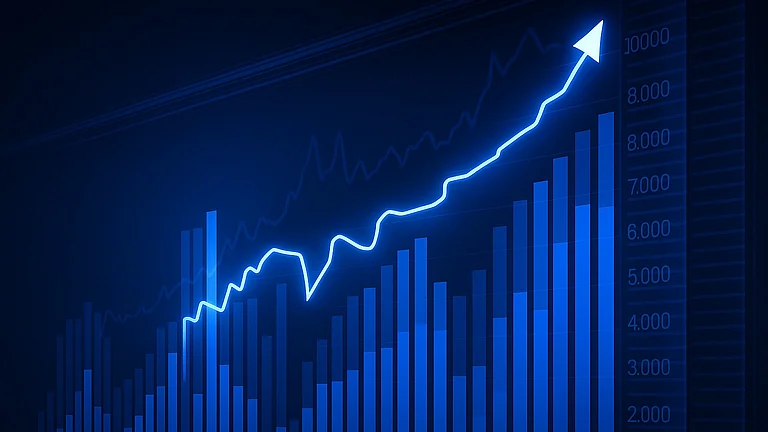What came as a blow to US President Donald Trump’s economic agenda might cheer up players in some sectors and countries. Just as many of the US’s ‘trade partners’ were racing to strike deals before the July deadline, the US federal court delivered a landmark judgment that gave markets something to cheer.
Trump’s Tariff Gambit Hits a Legal Wall: What It Means for India?
A US federal court has struck down Donald Trump’s sweeping 'Liberation Day' tariffs, ruling they exceeded presidential powers under emergency economic law
The US Court of International Trade on Wednesday struck down Trump’s April 2 Liberation Day tariffs, which were imposed by invoking emergency economic powers law. The trade court ruled that the International Emergency Economic Powers Act does not actually give the president the power to unilaterally implement the sweeping duties.
Not just that, the tariffs was struck down with immediate effect even as the government counsel argued that tax levies were meant to pressure select countries into changing practices harmful to American interests.
What are Liberation Day Tariffs?
On April 2, Trump announced sweeping reciprocal tariffs of varying degrees, ranging from 10% to 46%, on more than 180 countries. Among those, India was slapped with a 26% tariff, though more than anticipated, but still at the lower end of the spectrum.
Meanwhile, it was these Liberation Day tariffs that poured fuel to the trade war between US and China, pushing Beijing to retaliate with its first set of tariffs on Washington.
However, within just a week of the tariff announcement, Trump took a U-turn and announced a 90-day reprieve amid mounting international and domestic pressure and a market rout, especially across the bond market.
Easing up further, Trump delayed a threatened 50% tariff on European goods after a call with European Commission President Ursula von der Leyen. He further cut the tariff on China from 145% to 30% after a temporary trade truce. Recently, the US inked a pact with the UK and hinted at one coming soon with India.
Trump’s Loss: A Breathing Space For India?
The ruling takes away the sword of the 90-day pause deadline hanging over India, giving New Delhi a chance to settle on better terms as it negotiates a trade deal with the US.
With the 90-day tariff pause deadline inching closer, anxiety was running high to prioritise a deal closure in time. The US on the other hand, was using the time ticker to its advantage to leverage better trade terms. As for India, the US was pushing New Delhi to even open up some politically sensitive sectors, such as agriculture, during the ongoing trade deal negotiations.
According to reports, some senior officials had expressed concerns about India opening up most sectors in order to avoid reciprocal tariffs. For context, these trade exemptions were on top of the several duty cuts, especially on bourbon whiskey and motorbikes, already announced in the Union Budget for FY26.
On that account, India can now seek better market access for its goods from the US under the deal given the tariff uncertainty is off the table, at least for now.
Meanwhile, global tech giant Apple may also breathe easier, as striking down of reciprocal tariffs may make it easier for the company to continue pushing through its production in India as it aims to switch bases out of China. This comes in the midst of Trump’s multiple threats of imposing a 25% tariff on Apple products manufactured out of the US.
Who Benefits? Pharma, Auto & IT in Focus
Information Technology and pharmaceuticals sectors, along with automobiles emerge as some which biggest beneficiaries to benefit from the ruling, largely due to the extent of their exposure to the US markets.
Although the US was yet to announce any tariff on pharma products, the cloud of uncertainty has flown away for now. On an average, the US market accounted for over 39% of the revenue of Indian pharma firms, according to a report by Geojit Investments.
Automobile and auto ancillary sector had over 29% of exposure to the US market, the report said. These companies are part of the global supply chain and would have an impact on sales and margin, it added. IT, the most vulnerable sector to tariff, having over 68% of revenue exposure to the US market, is expected to take a breather after the ruling.
However, it was not only an indirect impact of tariff which could have affected the IT sector, as it was staring at loss of business due the increasing risk of economic slowdown in the US due to the tariffs. This raised the risk of recession in the US, which posed the threat to force major customers to cut down discretionary spends, taking away the bread and butter for Indian IT players.
However, the blocking of these tariffs is unlikely to be a really big game changer for India Inc, just as its imposition wasn't when they were first introduced. Analysts had noted that while the headline 26% tariff might sound steep, it will not have that deeper impact, as there was no major impact on exporting sectors like IT services, pharmaceuticals. In fact, the tariff burden on India appears relatively modest compared to the steeper duties imposed on other exporting nations, they said.
Some also argued that the tariff gave an edge to India, as the country stands to benefit from the disruption to China’s trade flows. Recently, Moody’s Ratings also reverberated the sentiment and viewed India as better equipped than many emerging markets in withstanding the impact of US tariffs and global trade disruptions due to its strong domestic growth drivers and a low reliance on goods exports.


